Overview of 2025’s Gym Flooring Options
If you’re looking for gym flooring options in 2025, consider exploring new ideas, strong materials, and good value. This is true for both big commercial gyms and your own home gym. From my experience, top brands are meeting these new needs. They have new materials and easier ways to install flooring. They also focus on earth-friendly production. Here, let’s compare the top 7 gym flooring options. I will share performance info, prices, reviews, and my personal recommendations for different gym types.
1. Rubber Gym Flooring: Durability, Lifespan & Benefits
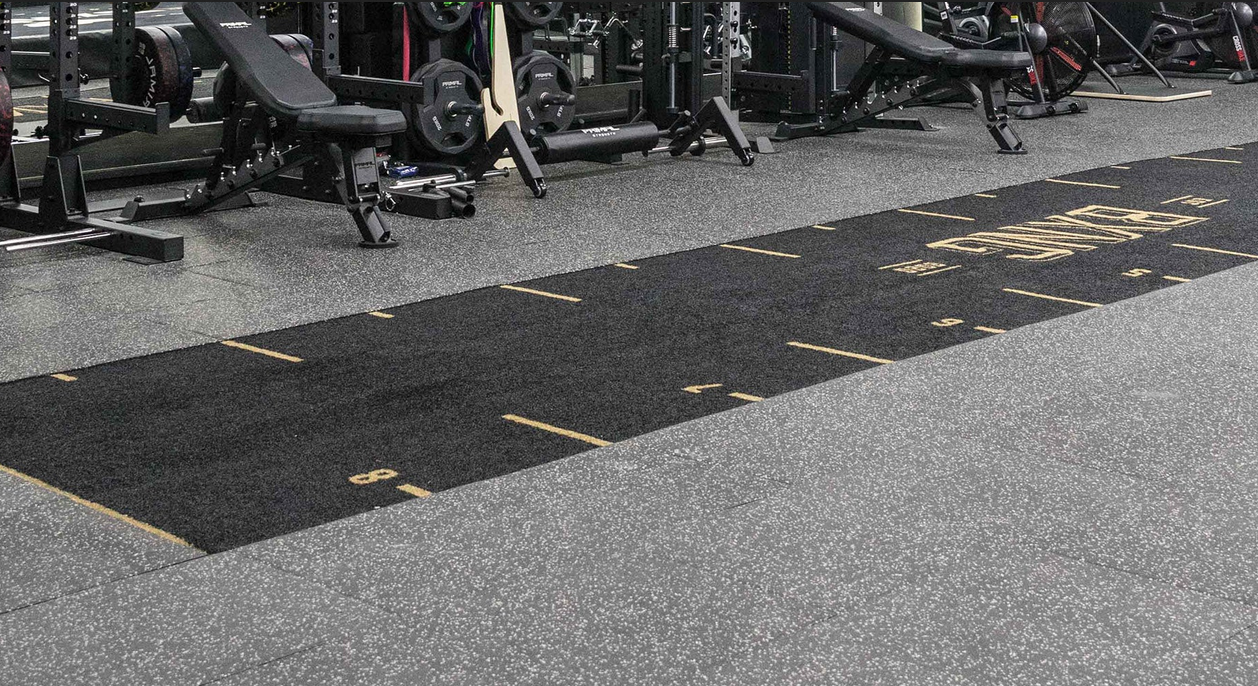
In my opinion, rubber flooring is a top pick for gyms in 2025. I like it because it’s tough, lasts a long time, and is easy to take care of.
Key Advantages of Rubber Gym Flooring
Very Durable: From my experience, rubber stands up well to dents, scratches, and moisture. It can handle heavy impacts. Its bounce absorbs the shock from dropped weights. I think it’s great for both big gyms and home setups.
Maintenance & Care
Easy to Clean: I suggest you sweep or vacuum regularly to remove dirt. Mop it once a week with a gentle, pH-neutral cleaner. This will keep the surface in good shape. My advice is to avoid harsh cleaners to make the floor last longer.
Choose the Right Material: Based on my experience, natural rubber and premium EPDM mats are the most durable. They will outlast cheap, off-brand choices.
I believe rubber gym flooring is a smart buy. It offers lasting protection, comfort, and is easy to maintain for any kind of gym.
2. Foam Gym Flooring: Comfort, Affordability & Suitability in 2025
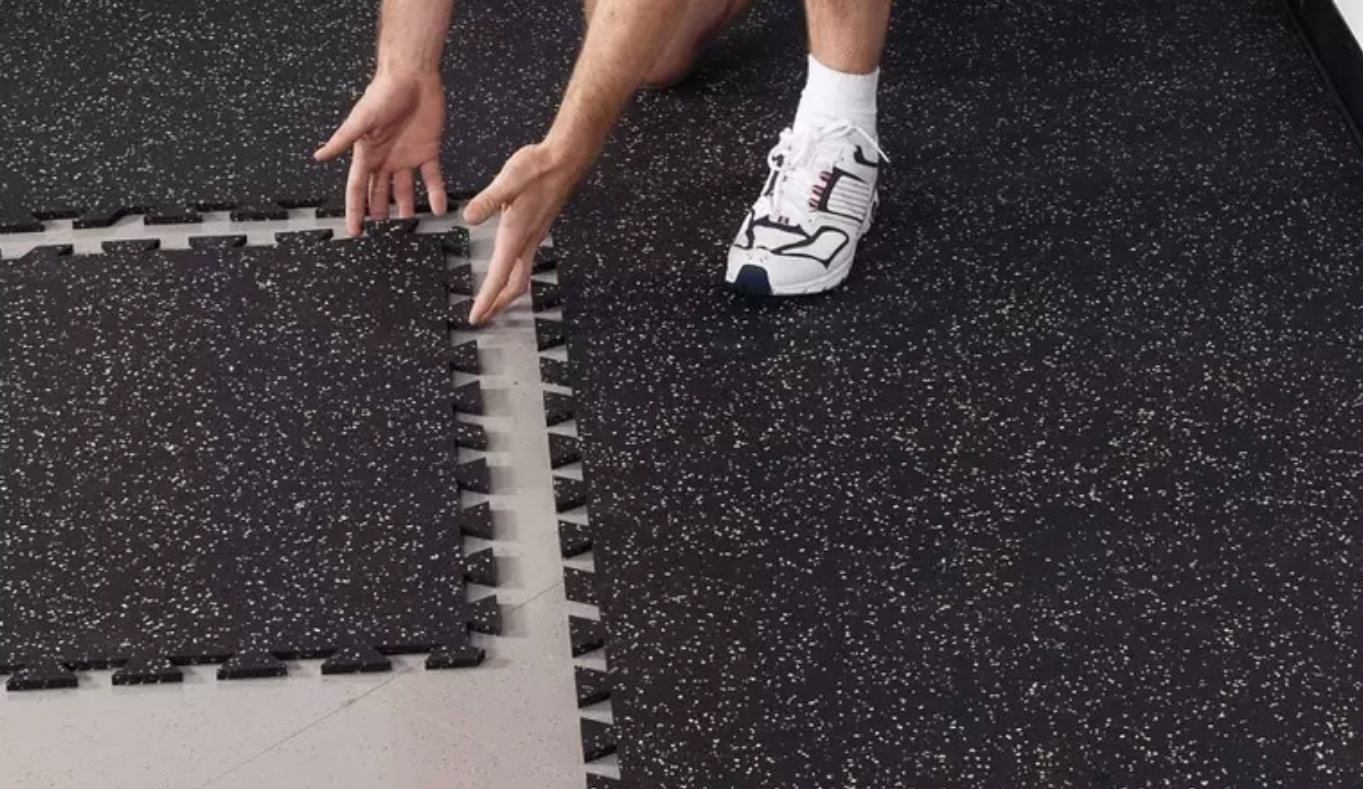
If you prioritize comfort and budget, I think foam gym flooring is a great choice for a home gym in 2025. I find it’s very popular for bodyweight routines like yoga and pilates. These exercises need good joint protection and a soft surface, which foam provides.
Key Features & Technical Details
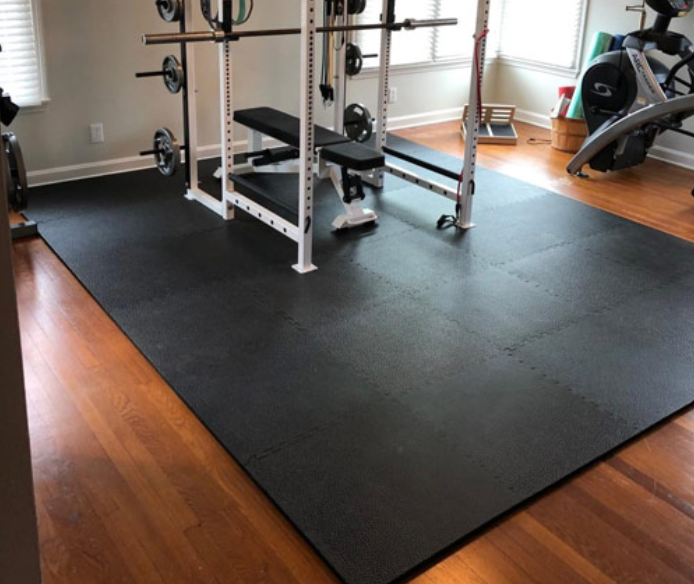
Material: Most foam gym flooring uses high-quality EVA (Ethylene Vinyl Acetate) foam. I like this material because it’s lightweight and flexible. It also has good impact resistance, so it absorbs shock well during exercise.
Thickness: From my experience, panels come in sizes like ⅜” to ⅖” (about 10mm thick). This thickness provides a nice cushion while still protecting the floor below.
Tile Size: The common 24” x 24” dimension for EVA foam tiles is great. I find this size easy to handle and simple to install at home.
Interlocking Design: Most foam tiles I’ve seen use a puzzle interlocking edge. This system makes them quick to put together. It also creates a stable workout surface that won’t slip and slide around.
My 2025 Review Insight: In my experience, users rate foam as the top choice for comfort and price. It’s perfect for a home workout space without heavy equipment. For light, joint-safe workouts, I think foam flooring is a fantastic value. Just remember, it won’t support a full powerlifting setup.
3. Vinyl Gym Flooring: Versatility, Durability & Modern Design in 2025
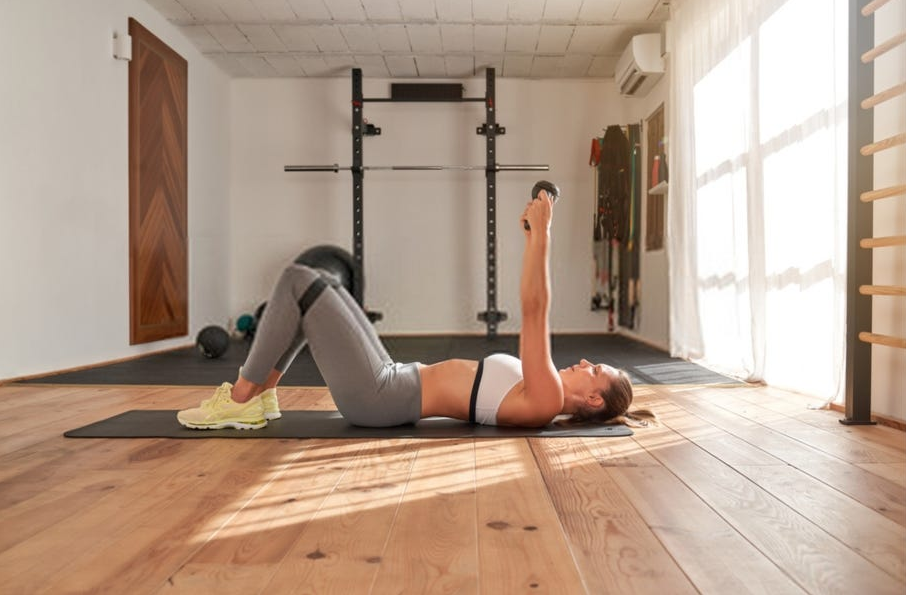
I’ve noticed vinyl gym flooring is more popular in 2025. I believe it’s because it perfectly mixes style, strength, and flexible use. It works great for both home gyms and large commercial ones.
Key Features & Material Options
Material Choices: You can get vinyl flooring in two main forms. One is large sheets, like Polyflor Sport 67, which is 6.7mm thick and comes in 2m x 18.5m sizes. The other is modular tiles. A good example is the Flooring Inc Grid-Loc tile (0.5″ thick), which has a strong polypropylene base and a vinyl surface.
Design Variety: I really like the variety of designs available. You can pick from realistic wood looks, solid colors, and modern patterns. I’ve seen premium tiles with at least 8 color options. This helps you avoid the dark, factory-like look of older gyms and adds visual style to your space.
Multi-Purpose Use: I recommend this flooring for many uses. It’s great for cardio, HIIT, yoga, dance, and group classes. It also works well for sports courts like basketball and in wellness centers.
Brand & Product Examples
Polyflor Sport 67: This option is 6.7mm thick and EN14904 certified for arenas that host multiple sports.
Flooring Inc Modular Grid-Loc Tile: It’s 0.5″ thick with 8 color choices. I like the simple modular system. It costs about $8.99/sq ft.
Ecore Sheet Vinyl: This flooring is easy on the joints and low-maintenance. It’s offered in many thicknesses and designs.
Soft PVC Vinyl Tiles: These are resistant to chemicals and great for garages and gyms. The DIY setup is straightforward.
Baier SPC Flooring: It can not only be used at home, but also has the characteristics of being beautiful, durable, and easy to maintain on large commercial floors.
My 2025 Take: I believe vinyl gym flooring is a fantastic choice if you care about style, flexible use, and easy cleaning. It’s comfortable, hygienic, and easy to install yourself, making it a great alternative to wood or plain rubber. I would just suggest you look for a different material if you’re building a dedicated area for heavy powerlifting.
4. Carpet Tiles: An Affordable Choice for Your 2025 Home Gym
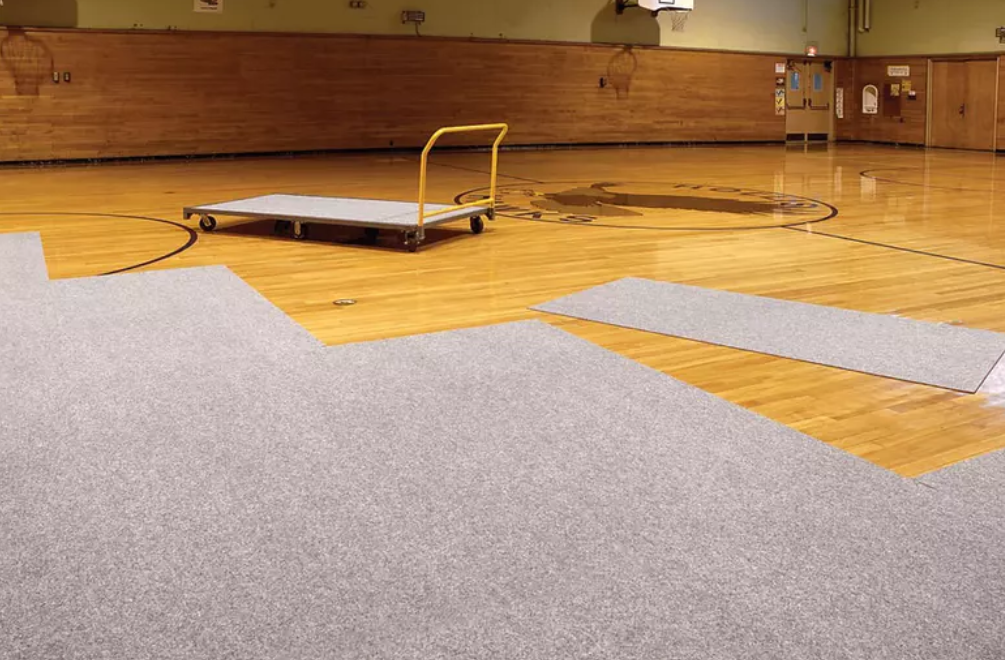
Are you looking for comfortable and affordable gym flooring in 2025? I think carpet tiles are a great option. They work very well in home gyms or multi-use rooms where you do low-impact exercises.
Key Features & Performance Data
Best Use Cases: I recommend carpet tiles for cardio zones, bodyweight workouts, stretching, yoga, and Pilates. They are great for living rooms, bedrooms, or basements. I would not use them for heavy lifting or dropping weights.
Comfort & Cushioning: Many options, like Eclipse Peel and Stick Carpet Tiles, come with a built-in cushion pad, such as a 6-pound polyurethane underlay. This makes the floor feel soft. I find it perfect for light workouts and general home activities.
Durability: Based on my experience, I give carpet tiles a 3/5 rating for durability. To make them last, I suggest choosing commercial-grade, low-pile, or tight-loop tiles. These will still wear out faster than rubber if you do high-impact training.
Sizes & Materials: The standard size is 24″ x 24″. You can also find larger models up to 36″ x 70″. I’ve seen many new tiles made from 100% recycled polyester. This is a great choice if you want a floor made from sustainable materials.
Maintenance: Basic cleaning is easy. The problem is that carpet tiles can trap moisture. This might mean you need a professional cleaner to prevent smells or mold. Some brands have water-resistant options, but not all.
Installation: I think the DIY installation is a huge benefit for interlocking carpet tiles. If your tiles don’t interlock, I suggest hiring a professional to get a smooth, even finish.
5. PVC or Plastic Tiles: DIY Gym Flooring That’s Durable & Stylish in 2025
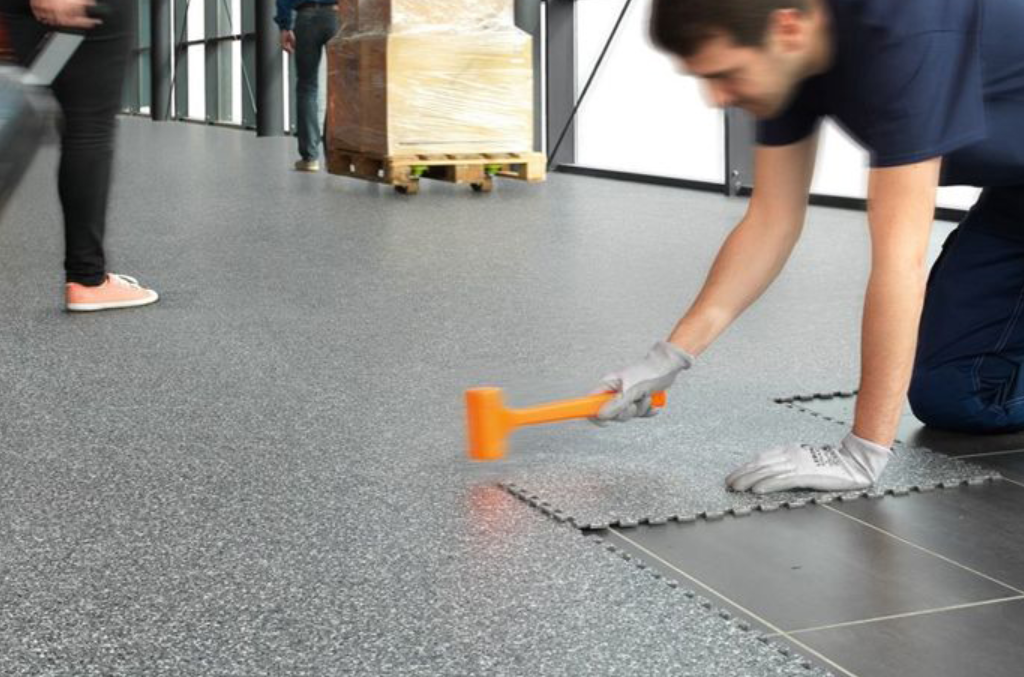
I see PVC and plastic gym tiles becoming very popular for 2025. They are a great fit for garage gyms and home fitness areas. From my experience, they give you a great blend of toughness, simple installation, and a modern style. This combination makes them stand out from other gym floors I’ve seen.
Why I Recommend PVC/Plastic Gym Tiles
Easy DIY Installation: I like that these soft PVC tiles have a clever, interlocking puzzle design. You can install them yourself without any special glues or tools. I think most people can lay them over a concrete floor in just a few hours. This is a great choice if you want to upgrade your gym quickly and save money on professional installation.
Tough Construction: These tiles were first made to be used in car garages, so you know they are strong. In my opinion, they can easily handle the weight of treadmills, bikes, and benches. They do a much better job of resisting dents and scratches than regular foam or carpet.
Shock and Impact Protection: I find that their built-in shock absorption is great for protecting your joints during workouts. The anti-fatigue feature makes standing for long periods more comfortable. If you drop a moderate weight, you probably won’t cause any permanent damage to the floor.
Easy to Keep Clean: I suggest these because they are 100% waterproof. They also stand up to mold, mildew, and chemical spills. You don’t have to worry about sweat or spilled water ruining them. I find cleaning is simple; just use a mop or a cloth to wipe them down.
Portable and Flexible: The interlocking design means you can easily pick up and move your tiles. If you’re renting, this is a huge plus. When you move, you can just take your floor apart and bring it to your new gym space.
Key Specs & Product Examples
Thickness & Protection: Most soft PVC tiles I’ve seen are about 0.5 inches thick. I believe this thickness is great for holding up medium-sized weights. It also helps absorb the impact from your cardio workouts.
Design Choices: You can get these tiles in many different colors and patterns. I really like that many brands sell tiles that look like wood or stone. This allows you to match your home’s style. You can even create custom patterns or add your own gym logo.
Price Point: A premium option like the Flooring Inc Modular Grid-Loc Tile costs $8.99 per square foot. Based on my research, this is more expensive than a basic rubber mat. However, it’s a much better deal than paying for hardwood or engineered wood floors.
Ideal for These Gym Activities
Perfect Fit: Cardio, HIIT, yoga, pilates, general fitness routines.
Limitations: I would not recommend these for heavy deadlifts. They are also not for repeated, high-impact weight drops. I’d rate them about 3/5 for really heavy-duty use.
My Bottom Line for 2025:
If you’re looking for a gym floor with a modern look that’s also practical, I recommend PVC tiles. They are simple to install yourself. Based on what I see, they offer the style, toughness, and flexibility that people building home or garage gyms want today.
6. Turf Flooring: Best Synthetic Turf for Gyms, Performance & Value in 2025
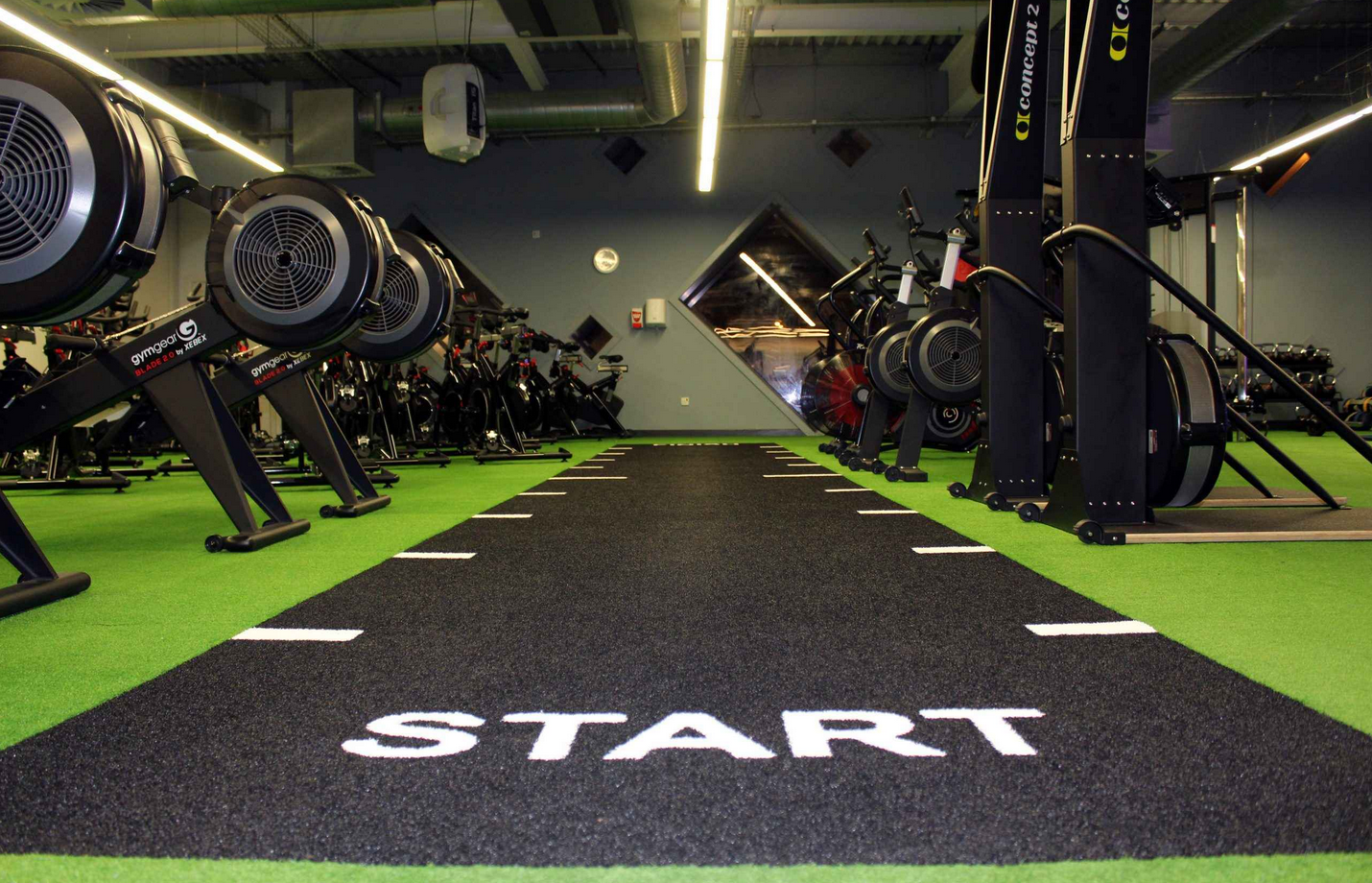
In 2025, I see turf flooring becoming a popular choice in gym design. It looks good and supports serious workouts. If you need a surface for sled pushes, agility drills, and varied training, I think high-density synthetic turf is a top option.
Main Benefits of Turf Gym Flooring
Superior durability with low maintenance
Turf is engineered for intense, constant use. From my experience, it resists stains, fading, and tearing better than most gym surfaces. The numbers support this: there are over 13,000 synthetic turf fields in the US and 1,500 new gym installs each year. It requires little upkeep. You don’t need to water, mow, or fertilize it. This saves you money over time compared to rubber or hardwood floors.
Enhanced safety & injury prevention
The dense fibers and strong latex base help absorb shock. I like how it cushions landings and reduces stress on my joints. The surface is non-slip and even, which helps prevent trips and injuries during high-impact moves.
In summary: If you need functional and durable flooring for your gym in 2025 that also looks fresh, I recommend a quality turf surface. I think it’s a smart pick for training that involves many different activities. The savings on cost will increase over the years.
7. Hardwood or Engineered Wood Gym Flooring
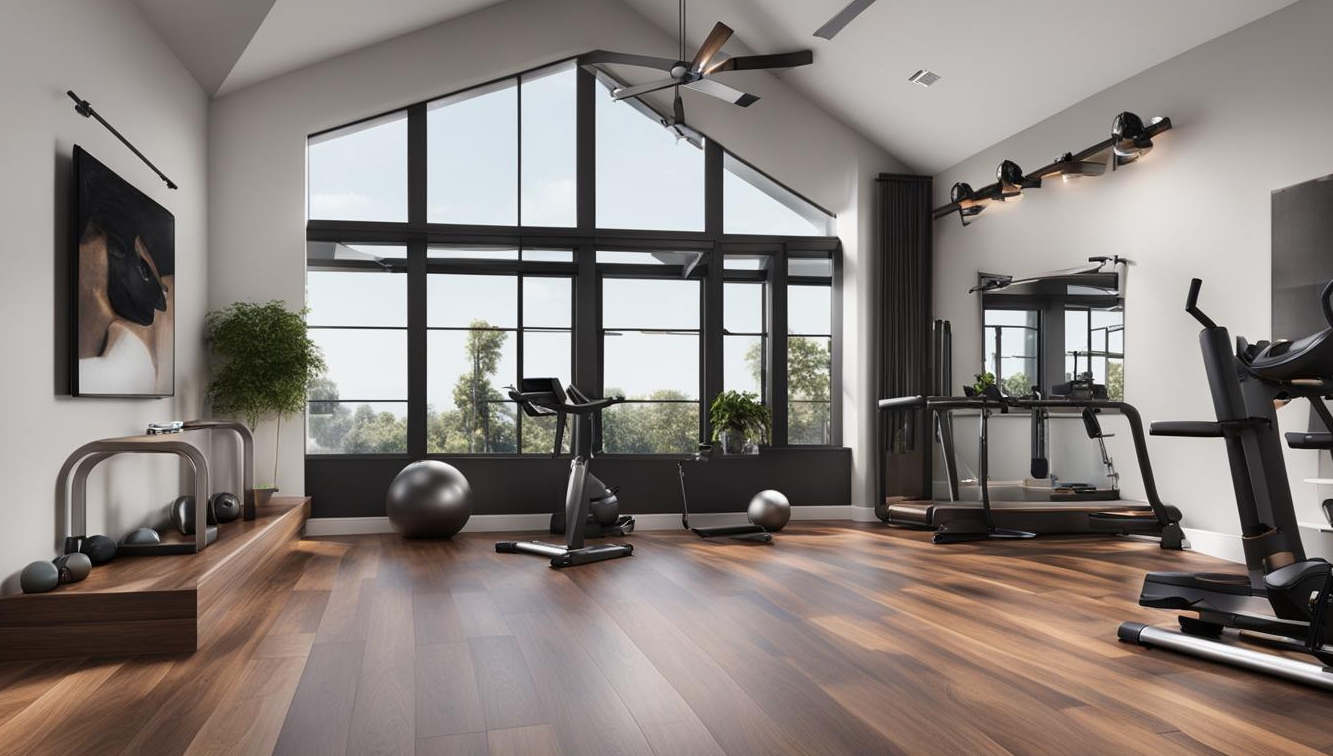
In 2025, I find that hardwood and engineered wood are still top choices for gym floors. They offer a great look, excellent sports performance, and a traditional gym feel. I’ll explain how they stack up against other modern floors and what I think you need to know before you buy.
Material Types & How They’re Made
Engineered wood: It has a real hardwood top layer over plywood or a dense fiberboard. From my experience, this construction makes it more stable and resistant to moisture. I believe it’s a smarter pick than solid wood if your gym has controlled humidity.
Maple hardwood: I see this as the best choice for pro and school basketball courts. It’s very hard, has a smooth look, and lasts a long time.
Sports Performance & Safety
Ball bounce: Both floors give you a great ball bounce. The Maple flooring manufacturers Association says they get a 93%+ rebound. I think this is perfect for basketball or volleyball, where the floor’s response is key.
Resiliency: Wood floors have some cushion. This makes them safer for falls and high-impact moves. I feel they are much better than hard tile or concrete.
Aesthetics: The warm, high-end look of real wood is great for specialty fitness studios, fancy home gyms, and centers used for many sports.
My 2025 Verdict
In addition, the flooring that should be mentioned is the composite laminate flooring. If you are a professional flooring wholesaler or flooring project contractor, you should know that the comfort and cost-effectiveness of laminate flooring are much higher than that of solid wood flooring.
Brand Comparison Table: 2025 Gym Flooring Brands, Features & Customer Ratings
Expert Opinion:
“I tell my clients to look past just the price and star ratings for 2025 gym flooring. From my experience, it is more important to match the floor’s features to how you will use it. For instance, I have seen many home gym owners pick expensive, professional-grade floors like Mondo or Pavigym. A mid-range brand like Sprung would have been a great fit for their needs.
Customer ratings can be misleading. They often say more about the installation process than the floor itself. A rating may also just show if a customer’s expectations were met, not the product’s actual quality. My advice is to focus on brands with clear product details, fair warranties, and good customer service instead of just the highest ratings.”
———— YUl , Commercial Fitness Facility Consultant. She has 12 years of experience in gym design and choosing the right floors.
| Brand | Key Features | Range | Typical Price Range | Customer Ratings | Notable Pros | Cons/Limitations |
|---|---|---|---|---|---|---|
| Sprung | Top-rated innovator, sells direct to you | Rubber, vinyl, wood, modular, outdoor | Competitive, mid-market | 4.5/5 Trustpilot | Great value, lots of choices, new designs | Newer company, not sold everywhere |
| Gerflor | A trusted name for commercial gyms | Vinyl, rubber, linoleum | Upper mid to premium | 4.5/5 typical | Very durable, lots of experience with big gyms | Costs more, not really for home gyms |
| Ecore | A leader in green flooring, uses recycled materials | Rubber, turf, specialty surfaces | Premium | 4.4/5 typical | Good for the planet, absorbs shock, quiet | Higher price, limited home gym options |
| Junckers | European hardwood experts | Wooden sports floors | High | 4.3/5 typical | Looks luxurious, proven for sports halls | Expensive install, not for heavy weights |
| Boen | Natural wood with quality finishes | Engineered wood, multi-layer | High | 4.2/5 typical | Beautiful finish, has green certifications | Costs more, not many options to choose from |
| Regupol | The original rubber flooring maker | Rubber rolls, tiles | Mid to premium | 4.4/5 typical | Absorbs impacts well, lasts a long time | Fewer new ideas, simple styles |
| Mondo | A major global brand for sports floors | Rubber, tracks, multi-sport | Premium | 4.5/5 typical | Olympic-level quality, super durable | High price, better for big facilities |
| Pavigym | An expert in fitness surfaces | Rubber, acoustic, modular options | Premium | 4.6/5 typical | Good for sound reduction, has smart gym tech | High cost, a big investment |
| Greatmats | A US supplier with a huge selection | Rubber, foam, turf, specialty | Budget to mid | 4.5/5 typical | Big catalog, has mats for martial arts & cheer | Some items are lower quality or less durable |
| Living.Fit | Home gym expert, great for a budget | Rubber mats, EVA foam tiles | Low to mid | 4.7/5 typical | Low price, easy to install, fits small spaces | Mats are small, not for pro-level use |
